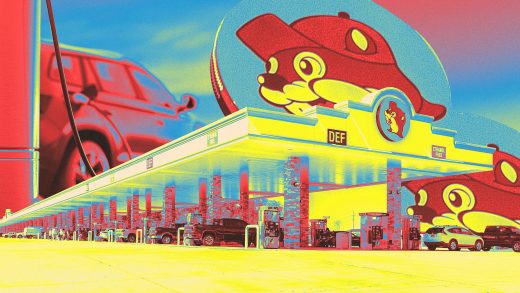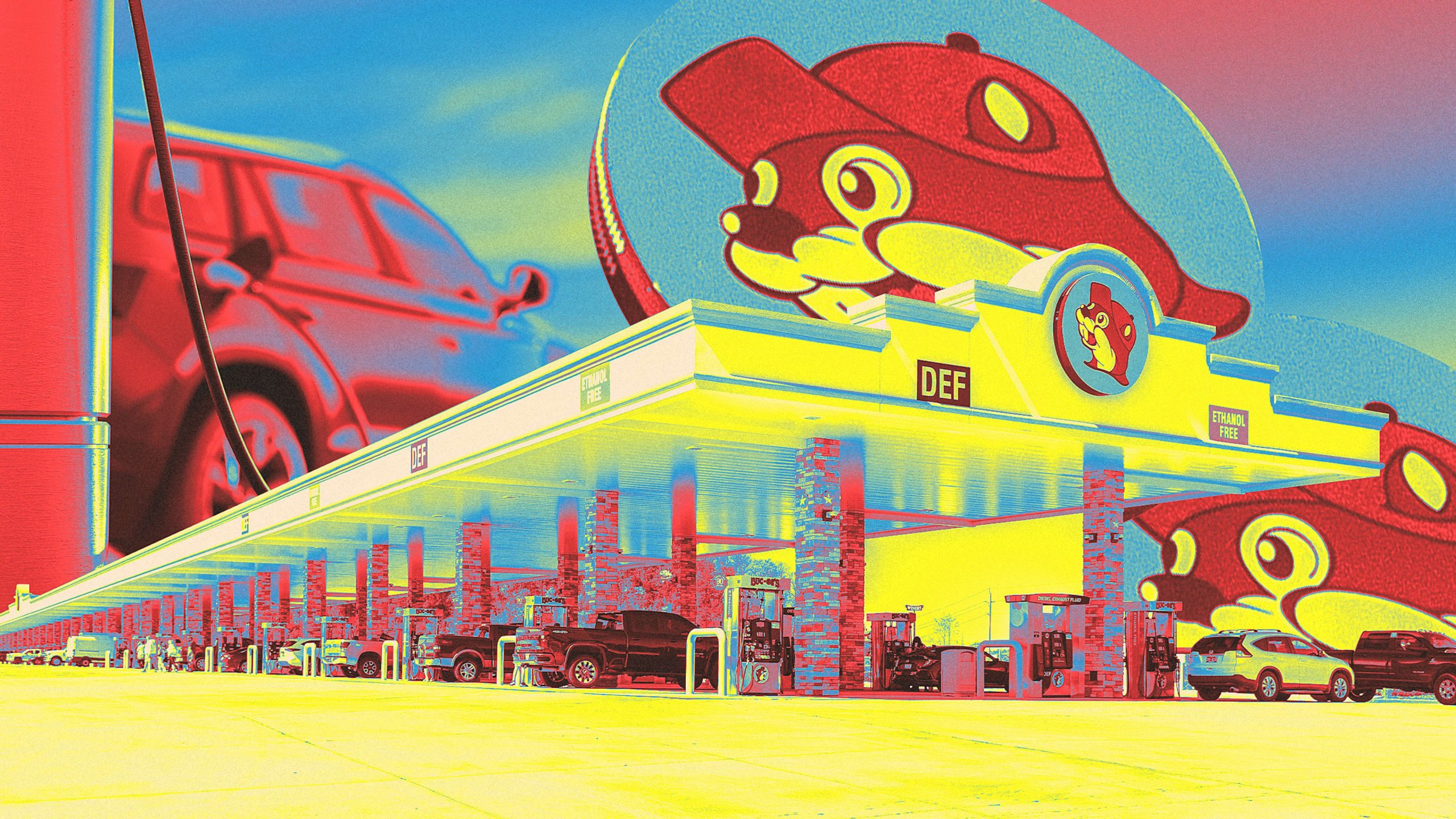How Buc-ee’s gas stations became the unlikely champion of EVs
How Buc-ee’s gas stations became the unlikely champion of EVs
At a time when many electric vehicle makers are pulling back on production, the cult gas station brand is building out its EV charging infrastructure.
BY Rob Walker
Branded is a weekly column devoted to the intersection of marketing, business, design, and culture.
The fast-moving electric vehicle revolution seems to be navigating some speed bumps lately, with sales leveling off, questions about future demand, and EV policy debates becoming increasingly political. But some auto-sector players are still racing ahead—and not just obvious EV-centric brands like Tesla. One notable example: a recent team-up between Mercedes Benz and Buc-ee’s, the Texas-based chain perhaps best known for equipping many of its stations with an armada of 100 or more gas pumps.
The collaboration, announced late last year, is a key element of a broader plan by Mercedes that will reportedly involve investing more than $1 billion to build out a network of 400-plus charging hubs in North America, targeting not just areas where EVs are concentrated, but also on travel routes and in EV charging “deserts.” (The chargers work with all brands of electric vehicles but offer Mercedes drivers perks like reserving slots in advance.)
Mercedes has since announced other partners including Simon Property Group, which owns an array of retail and entertainment properties. But the Buc-ee’s tie-up stands out: a cult favorite in Texas and other Southern states, the chain of food-and-souvenir travel centers is known for jumbo-size spaces packed with branded gear featuring its beaver mascot, an array of road snacks like Beaver Nuggets, inflatable beaver figures for selfie opportunities, and pristine bathrooms. It’s practically synonymous with road trips and, well, gas.
In a statement announcing the collaboration, Buc-ee’s said the move would extend its “traditions of elevated customer convenience and excellent service,” along with its “redefine the pit stop” ethos. It’s also a doubling down on EV options, adding to Tesla superchargers at a number of its locations. “We’ve made fast progress since our announcement,” Mercedes said in a statement answering questions from Fast Company, with chargers operating at about a dozen Buc-ee’s locations in Texas, Alabama, Georgia, Florida, South Carolina, Tennessee, and Kentucky. “We’re excited to electrify key gaps along popular travel routes to facilitate longer distance travel.” One involves 12 locations in the “Texas Triangle” (Austin, Dallas-Fort Worth, Houston, and San Antonio)—home to 68% of Texans—offering EV drivers “the freedom to go the distance without range anxiety.” Mercedes plans to enter about a dozen new states in the next 12 to 18 months.
But this rollout has coincided with the EV future at a crossroads. Demand for the vehicles seemed to level off at the end of last year, a trend blamed partly on a dearth of affordable models in the U.S. market. Political uncertainty may be a factor, too: a second Trump administration would likely work to roll back EV-friendly policies and incentives; and a recent Morning Consult Wall Street Journal poll found that about 40% of consumers have a negative view of EVs, and more than a third of those cited “political or ideological” reasons. A recent Goldman Sachs analysis singled out a third factor: a shortage of charging stations, combined with battery life concerns, is still making some consumers skeptical.
In its comments to Fast Company, Mercedes countered that, beyond the headlines, EV sales are still growing, with longer-term forecasts from the International Energy Agency estimating U.S. sales of reaching 2.5 million in 2025, up from 1.1 million in 2023. The EV ramp-up, the company maintains, is not a question of if but when, and that only underscores “a major gap in the quality of today’s public charging experience” that Mercedes sees as an opportunity. “We’re entering a new era of charging and one that an automaker like Mercedes-Benz is poised to lead,” says Andrew Cornelia, CEO and president of Mercedes-Benz High-Power Charging. “We have the right influence and capacity to set a new standard.”
Buc-ee’s, while clearly beloved by its customer base, may not seem like an obvious collaborator with a relatively high-end European car brand. But Mercedes says the match is about quality and convenience for the driver. “When charging is anticipatory and seamlessly integrated into your day, it no longer becomes a disruption,” Cornelia says. “Our solution is simple: Dial up speed, dial down inconvenience.” And associating charging stations with Buc-ee’s eases fears around battery limits.
On a broader and more symbolic level, placing chargers at Buc-ee’s is a step toward making EV infrastructure feel like a normal part of everyday American road life, rather than something novel or exotic. And that transition from the exceptional to the routine is exactly what all EV enterprises are now trying to achieve. It’s one thing to have charging stations at Whole Foods, and something else entirely to have them at popular road-tripper gas stations.
That idea works in reverse, too: Buc-ee’s, of course, still has its plethora of pumps but positions itself as ready for a more EV-inclusive future, keeping it relevant without sacrificing its familiar features. For the combined Mercedes-Buc-ee’s project, the underlying idea is that EV drivers won’t have to trade off the habits they already know and love to recharge—it’s just another aspect of a quality rest stop. In other words, the idea is to meet drivers where they are, and where they’re going.
ABOUT THE AUTHOR
(26)



